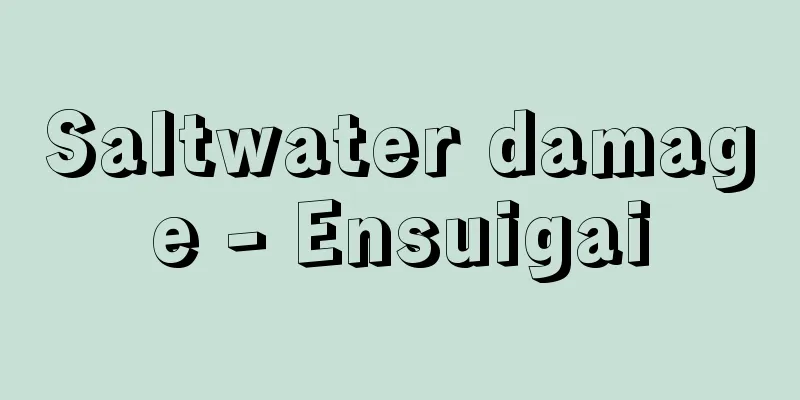Shozo Tanaka

|
A politician and social activist of the Meiji period. He was born as the eldest son of Tomizo, the headman of Konaka Village, Aso County, Shimotsuke Province (Konaka Town, Sano City, Tochigi Prefecture). At the age of 17, he was elected headman of Konaka Village, where he rebelled against the oppressive rule of his master, the Rokkaku clan, and attempted reforms, for which he was imprisoned. After the Meiji Restoration in 1870 (Meiji 3), he moved to Tokyo and became a subordinate official of Esashi Prefecture (Iwate Prefecture), working at the Hanawa branch office. The following year, he was suspected of murdering a superior officer and imprisoned, but was finally acquitted and released in 1874, returning home. During this time, he read works such as Saigoku Risshihen, and came into contact with Western thought. In 1879, he founded the Tochigi Shimbun, and advocated the urgency of establishing a national parliament. The following year, he became a prefectural assembly member representing Aso County, a position he held until he was elected to the House of Representatives in 1890, serving as speaker from 1886. During this time, he organized a civil rights association, Chusetsusha, in Aso County in 1880, submitted a petition to the Senate for the establishment of a national parliament, and invited members of the Oumeisha association to hold speeches around the country, working to spread the idea of civil rights. The following year, he attended the founding convention of the Liberal Party, where he advocated for the formation of a major constitutional political party by uniting urban intellectuals and local volunteers, but was not accepted. In the end, he joined the Constitutional Reform Party the following year in 1882, and built one of the largest reform party forces in the country in Tochigi Prefecture. In 1884, he was temporarily imprisoned for opposing the civil engineering policy of Prefectural Governor Mishima Michitsune. In the first general election in 1890, he was elected to the House of Representatives from Tochigi 3rd District (Aso, Ashikaga), and was re-elected every time until 1901 (Meiji 34). During this time, he criticized the clan-based government with his own interpretation of the constitution. In particular, in the second Diet in 1891, he took up the issue of the Ashio Copper Mine pollution damage along the Watarase River, which had become evident at the time, and submitted a questionnaire to the government, and has since pursued this issue consistently. In 1896, he established the Tochigi and Gunma Prefecture Pollution Offices at Unryuji, Watarase Village, Gunma Prefecture, and then the Tokyo office, and organized the victims, demanding the cessation of mining at the Ashio Copper Mine, and focused on this issue in his question speeches in the Diet, lobbying newspapers and other organizations to arouse public opinion. In 1900, the fourth mass petition by the victims was thwarted by the military police and police with swords and violence, leading to the Kawamata Incident. Tanaka made a "speech about the ruin of the nation" in the Diet, vehemently pursuing the government's responsibility, and by leaving the Constitutional Democratic Party, made it clear that his position was not based on partisan interests. Tanaka, who had already lost hope in the Diet and political parties, resigned from his seat in the Diet in October 1901, and in December of the same year appealed directly to the Emperor, shocking society. This incident led to increased support for the victims among journalists, students, Christians, and Buddhists. However, the Copper Poisonings Investigation Committee, established by the Cabinet the following year in 1902, avoided fundamentally resolving the copper poisoning problem and instead drew up a plan to build a reservoir in Yanaka Village to control the flooding of the Watarase River. In 1904, he moved to Yanaka Village, which was in danger of being submerged, and opposed the forced purchase of the village. In 1907, Tochigi Prefecture forcibly destroyed the 16 remaining houses in Yanaka, but he resisted to the end, preaching that he would save Japan from the brink of national annihilation by "reviving Yanaka Village." His resistance was based on Christian humanitarianism, and was based on the Constitution, against "Haken Hado" (the destruction of the Constitution and humanity). However, before he could restore Yanaka Village, he died of stomach cancer on September 4, 1913. His remains are interred in five locations, including Soshu-ji Temple in Sano, Fujioka (Tanaka Reishi) in Fujioka-cho, Tochigi City, where Yanaka residents remain, and his birthplace, Konaka-cho, Sano City. [Masaomi Yui] "The Complete Works of Tanaka Shozo, 19 volumes and 1 supplementary volume, edited by the Tanaka Shozo Complete Works Editorial Committee (1977-80, Iwanami Shoten)" ▽ "The Life of Tanaka Shozo, edited by Kinoshita Naoe (1928, Kokumin Tosho Kankokai/reprint edition, 1966, Cultural Materials Research Association)" ▽ "The Life of Tanaka Shozo, volumes 1 and 2, written by Shimada Sozo (1972, Sanichi Shobo)" ▽ "The Life of Tanaka Shozo, written by Hayashi Takeji (Kodansha Gendai Shinsho)" ▽ "The Bitterness of Tanaka Shozo and the Ashio Copper Mine Pollution Incident, written by Shiroyama Saburo (Kadokawa Bunko)" ▽ "The Collected Writings of Tanaka Shozo, edited by Yui Masaomi and Komatsu Yutaka, 2 volumes (Iwanami Bunko)" [Reference] | |©Shogakukan Library "> Masazo Tanaka Source: Shogakukan Encyclopedia Nipponica About Encyclopedia Nipponica Information | Legend |
|
明治期の政治家、社会運動家。下野(しもつけ)国安蘇(あそ)郡小中(こなか)村(栃木県佐野市小中町)の名主富蔵の長男として生まれる。17歳で小中村名主に選ばれ、主家六角(ろっかく)家の苛政(かせい)に反抗し、改革を試み投獄される。維新後の1870年(明治3)上京し、江刺(えさし)県(岩手県)の属吏となり、花輪分局に勤務。翌年上役殺害の嫌疑を受けて投獄され、1874年ようやく無罪釈放となり帰郷。この間『西国立志編(さいごくりっしへん)』などを読み、西欧思想に触れる。1879年『栃木新聞』を創刊、国会開設の急務を説く。翌年安蘇郡選出の県会議員となり、以後1890年衆議院議員に選出されるまで在職、1886年からは議長を務めた。この間、1880年安蘇郡に民権結社中節社(ちゅうせつしゃ)を組織し、国会開設建白書を元老院に提出、また嚶鳴社(おうめいしゃ)社員を招き各地に演説会を開き、民権思想の普及に努めた。翌年の自由党結成大会に出席し、都市知識人と地方有志の結合による一大立憲政党の結成を説いたがいれられず、結局、翌1882年立憲改進党に入党、栃木県に全国有数の改進党勢力を築いた。1884年県令三島通庸(みしまみちつね)の土木政策に反対し一時投獄される。1890年の第1回総選挙に栃木3区(安蘇、足利(あしかが))から衆議院議員に当選、以後1901年(明治34)まで毎回当選を果たす。この間、独自の憲法解釈をもって藩閥政府を批判。ことに1891年の第二議会では当時顕在化した渡良瀬(わたらせ)川沿岸の足尾銅山(あしおどうざん)鉱毒被害を取り上げ、政府に質問書を提出、以後一貫してこの問題を追及。1896年には群馬県渡瀬(わたらせ)村雲龍寺(うんりゅうじ)に栃木・群馬両県鉱毒事務所を設け、ついで東京事務所も設置、足尾銅山鉱業停止の要求を掲げて、被害民を組織し、議会での質問演説で集中的にこの問題を取り上げ、新聞社などに働きかけ世論の喚起に努めた。1900年の第4回被害民大挙請願を憲兵・警官が抜剣、暴行して阻止した川俣事件(かわまたじけん)が起こると、議会で「亡国演説」を行い、政府の責任を激しく追及するとともに、憲政本党を脱党して、自己の立場が党派的利害に出るものでないことを明らかにした。それ以前から議会、政党に絶望しつつあった田中は、1901年10月議員を辞職、同年12月には天皇に直訴を行い、社会に衝撃を与えた。この事件を契機に、ジャーナリズム、学生、キリスト教徒、仏教徒らの被害民支持は高まった。しかし、翌1902年内閣に設置の鉱毒調査委員会は、鉱毒問題の根本解決を避けて谷中(やなか)村に貯水池を設けて渡良瀬川の治水を図るという計画をたてた。1904年水没の危機にさらされた谷中村に居を移し、谷中村強制買収に反対した。1907年栃木県は谷中残留16戸を強制破壊したが、「谷中村復活」によって日本を亡国の淵(ふち)から救済することを唱えて最後まで抵抗した。その抵抗は「破憲破道」(憲法破壊、人道破壊)に対し憲法を抵抗のよりどころとし、キリスト教の人道主義に基づくものであった。しかし谷中村復活を果たさないまま、大正2年9月4日、胃癌(いがん)のため没した。その遺骨は、佐野の惣宗寺(そうしゅうじ)をはじめ、谷中残留民の住む栃木市藤岡町藤岡(田中霊祠(れいし))、生地の佐野市小中町など5か所に分骨埋葬されている。 [由井正臣] 『田中正造全集編纂会編『田中正造全集』19巻・別巻1(1977~80・岩波書店)』▽『木下尚江編『田中正造の生涯』(1928・国民図書刊行会/復刻版・1966・文化資料調査会)』▽『島田宗三著『田中正造翁余録』上下(1972・三一書房)』▽『林竹二著『田中正造の生涯』(講談社現代新書)』▽『城山三郎著『辛酸――田中正造と足尾鉱毒事件』(角川文庫)』▽『由井正臣・小松裕編『田中正造文集』全2巻(岩波文庫)』 [参照項目] | |©小学館ライブラリー"> 田中正造 出典 小学館 日本大百科全書(ニッポニカ)日本大百科全書(ニッポニカ)について 情報 | 凡例 |
<<: Tanaka Shinbei - Tanaka Shinbei
Recommend
Shin Hiyoshi Gate - Imahiemonzeki
…The mountain name is Mount Nan'ei. It is als...
Korthalsia
…The petioles, leaf sheaths, and midrib of the un...
Kino Tomonori
A poet of the early Heian period. Compiler of the...
Rājshāhi (English spelling)
A city in western Bangladesh. It is the capital of...
Cosmic magnetic field - Uchuujiba
A general term for the magnetic field that permeat...
Uzuma Catfish - Uzuma Catfish
...It should be seen as a product of the social u...
Gavrinis (Gavr'inis) (English spelling) Gavrinis
…All of them are very obese and are related to th...
Business strategy - Keieisenryaku (English spelling) corporate strategy
It is a framework for selecting the means to achi...
Military expenditure - Gunjihi
National expenditures for military purposes are c...
Indonesian Islamic Union Party - Indonesian Islamic Union Party
...However, during this time, the leadership of t...
Hoof (hoof) - hoof (English spelling)
A sturdy shoe-like claw found in large herbivorous...
Rockfish fishing - Rockfish fishing
…It is often used as an ingredient in kamaboko (f...
Photo Gallery - Shashinkan
〘 noun 〙 A place that has a studio and takes pictu...
Social Times - Social Times
A progressive mass daily newspaper in the 1950s. F...
《Praise of the Foolish God》 - Gushinraisan
…A Latin satire by Erasmus (written in 1509, publ...
![Yamaga [town] - Yamaga](/upload/images/67cd0d69ae26e.webp)








